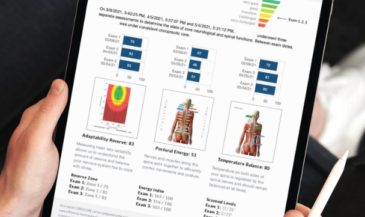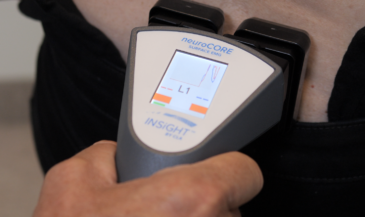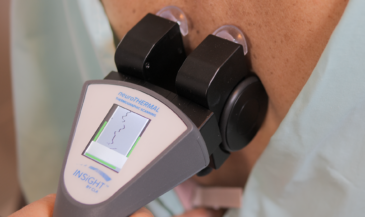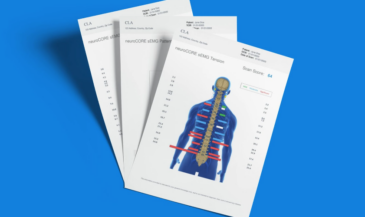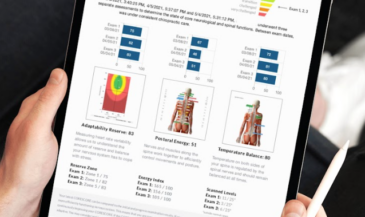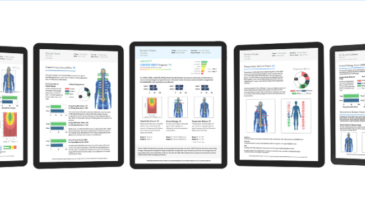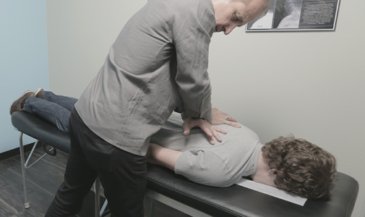Ever since D.D. Palmer, the luminary behind chiropractic, penned down his insights in, “The Chiropractor’s Adjuster”, the realm of Chiropractic has been buzzing about the pivotal “Three T’s”: Trauma, Toxins, and Thoughts. DD, in his brilliance, realized that the tone of the nervous system was affected by accumulated dis-stress coming from the three sources. Decades later, Selye recognized the neurological impact throughout the entire body of these same stressors. Today, we may refer to the three-dimensional stressor categories as Emotional, Physical and Biochemical but the outcome is the same: altered functional tone of the nervous system. By understanding the relationship and benefit of managing the three external stressors while releasing obstructions that impair the tone of neural processing, a salutogenic model of well-being can be established. Simply put, the external stressors can be identified and modified but it’s the actual tone of the nervous system that dictates how well a person can express their innate health potential. This simplified equation of restoring neural tone while addressing the combined “Three T’s” is the foundational basis of Chiropractic.
The Spine: More Than Just A Backbone
Let’s kick things off with the centerpiece of the operational model that revolves around Chiropractic and the Three T’s: the concept of vertebral subluxation (VS). In layman’s terms, it’s a misalignment of the vertebrae. In the Chiropractor’s worldview, this slight misalignment is associated with the presence of neurological interference and spinal distortions that need to be investigated more thoroughly. The spine can be evaluated by the use of X Ray, postural assessments, ROM’s and motion palpation but the nervous system needs to be analyzed differently, by the use of sophisticated assessment technologies which determine a shift in tension and efficiency. The combination of structural and functional changes, leading to the presence of VS, can wreak havoc on the body’s communication network: our nervous system. The spine isn’t just about posture; it’s the primary highway for the brain to chat with the body. If there’s a traffic jam, (read: vertebral subluxation), neurological signals can get distorted, leading to a myriad of health issues.
Getting To Know The Three T’s
1. Trauma: More than Meets the Eye
When we think of Trauma, what springs to mind? Car accidents? Falls? Sports injuries? Sure, these major events are traumatic, but daily activities contribute to micro-traumas in our spine and nervous system.
Beware of Bad Habits! Whether it’s slumping over our desk, perpetually glancing at our phones, or even the recurrent act of pulling a heavy bag over one shoulder, these actions can lead to subluxations. Even the way we sleep or wear higher heels plays a part! Sedentary lifestyles combined with endless screen time are probably the greatest physical stressor that are encountered in today’s society. Whether its tight muscles, eye strain,headaches or fatigue, these body signals confirm an out of sync nervous system and are likely related to the presence of VS. Spinal neural scanning can confirm this.
2. Toxins: Silent Saboteurs
Moving on to Toxins. Our environment is riddled with them. Whether it’s the air pollution or the innocuous looking cleaning agents under our sinks, these toxins subtly but surely impact our health. The idea isn’t to terrify, but to educate.
Be wary of pollutants in the air, chemical-laden cleaning agents, questionable water quality, and even certain foods, especially processed or GMO-laden ones. And while plastics might be convenient, toxins leaching from them aren’t quite the trade-off we want.
Regular use of medications, alcohol combined with poor dietary choices all contribute to the stressor overload and impact the efficiency and tone of the nervous system.
3. Thoughts: The Invisible Impact
Last, but certainly not least, Thoughts. If you’ve ever had a stress-induced headache or a bout of anxiety-induced indigestion, you’ve experienced firsthand how our thoughts influence our physical well-being.
Stress, anxiety, and even fleeting negative thoughts can trigger neurochemical imbalances, leading to increased blood pressure, heart rate, and muscle tension. Over time, without adequate recovery, these imbalances can lead to vertebral subluxations. Our emotional reflexes, like getting irritable at a coworker or feeling overwhelmed by daily chores, affect our bodies as if we were facing imminent danger. The persistent drag on the nervous system from the accumulated emotional stressors is real and is a dominant trigger in the creation of vertebral subluxations.
Addressing The Three T’s
Chiropractors have a unique approach to understanding and addressing persistent health issues. Salutogenic health care begins by looking at the nervous system’s capacity to manage lifestyle and lifetime stressors. Instead of focusing solely on the symptoms, chiropractors dig deep, identifying and addressing the root causes while analyzing and searching for vertebral subluxations.
The Chiropractic Path Forward
Chiropractors recognized the need to analyze the tone of the nervous system while assessing the alignment of the spine. This led to the development of the INSiGHt technologies that compliment the use of X Rays, postural evals and other structural assessment. INSiGHT scanning determines the impact of the VS on the efficiency of neural performance while pinpointing the presence of VS. The use of these sophisticated technologies allows specific careplanning to be determined which gives the patient and the doctor the ability to be updated at every step of the process. The application of regular chiropractic adjustments aims to correct the vertebral subluxations. These adjustments, combined with a comprehensive understanding of the Three T’s, paves the way for exceptional, salutogenic outcomes.
In Summary
Everyone, of any age, should be assessed for the presence of vertebral subluxations. Whether the goal is prevention or performance, understanding the impact of the Three T’s and working with a trusted chiropractic advisor, equipped with today’s INSiGHT technologies, is the most advanced approach when organizing an individual’s or family’s health care plan. While chiropractic adjustments are at the heart of this care, understanding the role of Trauma, Toxins, and Thoughts provides a broader, more informed approach to overall wellness.









































